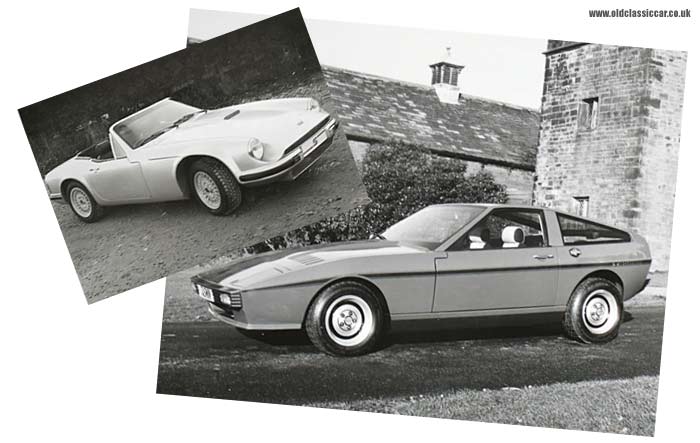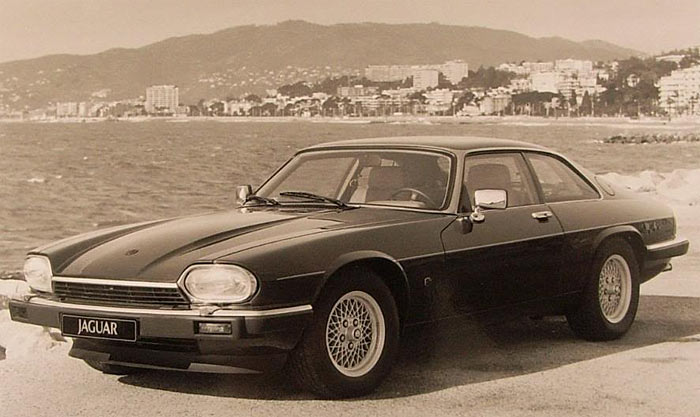

|

|
| See Homepage. | This page: Future classic cars Pt1 - Sportscars. |
So what will be the classic cars of the future?Introduction.If I were suitably deep of pocket, below are some of the more modern machines that I'd be thinking about hoarding now whilst they are still affordable. Some cars, such as the BMW Z3M Coupe or Morgan +8 were viewed as modern classics shortly after rolling out of the factory doors. Others, such as Kia Peroduas and Austin Maestro diesels are unlikely to be embraced as classics by all but the most devout of enthusiasts. Whatever the general consensus regarding what is and is not a classic, I feel that it's important for all branches of motoring to be represented for future generations - after all what's the point of everyone hoarding the best of every type of car, when there's nothing to compare them against? It wouldn't be very interesting to attend a classic car show if only rows and rows of MGBs were in attendance, and there weren't rivals such as Fiat 124 Spiders and Jensen Healeys to compare against.SportscarsThe last 10-20 years in the UK at least has seen a resurgence of interest in affordable and not-so-affordable sports cars, catering for most budgets. Many of these are now super-affordable and could well be worth preserving for future generations. Go back a few years and who remembers the Reliant Scimitar SS1? Produced with a number of engine sizes to choose from, these are now reasonably priced if you can find one - they weren't the best selling of 2 seater roadsters, probably due to their slightly gawky looks and panel fit measured in inches. But with fibreglass bodies at least the bodies aren't going to rot, and Reliant had by then got the hang of producing quality GRP bodyshells, witness the scary 3 wheeled Robins and Rialtos for example. Later SS1s had Nissan turbo motors installed, which made for a lively car, and the last incarnation of the SS1 line featured a much smoother body line and was a lot easier on the eye.Mazda really rejuvenated the affordable two-seater softtop market with their MX5, initially a 1600cc then enlarged to 1800cc. Reminiscent of the original 1960s Lotus Elan, upon which it was heavily based, it really does offer the best of both worlds in many ways, offering old car (ish) looks with modern car reliability. My other half has owned two examples of the Mk1, and they were great although the sills do need checking carefully for the effects of rust. MX5s have an excellent spares backup, a strong enthusiast following (how many modern-day car owners still wave to other owners they see driving by?) and are already gaining classic status, especially the original Mk1s with the popup headlamps. But if you don't fancy an oriental car, what are the alternatives? History suggests that home-grown two-seat MGs will become properly collectable. The MGF has been around for a while now, and is in many ways the spiritual successor to the MG Midgets and MGBs of this world, the MG RV8 limited edition in the 1990s acting as a re-introduction of the MG marque to the sportscar arena, after years of dilution on the back of badge-engineered Maestros, Montegos and Metros, which while certainly worthy of preservation did little to further the appeal of the MG legend to diehard enthusiasts at the time. Lotus also entered the fray with their Elan for the 1990s. Instead of "doing a Mazda" and going down the tried and tested front engine, rear drive, layout, they went all revolutionary and opted for front wheel drive and an Isuzu engine. The handling is very sharp, although died-in-the-wool open air motoring freaks baulked at having the front wheels both steering and laying the power to the tarmac. If you fancy something slightly rarer, how about a Fiat Barchetta? Only sold in limited numbers here in the UK, this lefthand-drive (only) sportscar certainly looks distinctive and has all the hallmarks of being a future classic, just as the 124 Spider and X1/9 proved before. Caterhams have been with us for many years, and have always been assured classic status, their roots of course going way back to Colin Chapman and the Lotus 7 of the 1960s, originally launched as the Lotus 6 with 1172 Ford sidevalve power.  Think TVR and the 1980s saw all manner of scarily-quick, wedge-shaped, projectiles leaving the labour intensive production line in Blackpool, available in numerous engine sizes, culminating in the 450SEAC if I remember correctly. Which was about the time that the TVR S model made an appearance, based heavily on the curvy sports cars of the 1970s such as the 3000M. These cars led to yet wilder and more lary machinery, originally using the legendary Rover V8 engine as a basis, and in the later years of TVR's operations their own engines. Ones to look out for in future classic car shows include the Chimaera, Griffith, Tuscan, Cerbera and Speed 6/12 models, the earlier wedge-shaped Tasmin already having a select band of followers, despite reliability which at times may get you on first name terms with the AA patrol men, although to be fair they are probably little worse than comparable Lotuses of the time, for example the Esprit and Excel. If a TVR is a little OTT then a modern-day Lotus, assuming you can fit in one, would make a great long-term buy, its DNA directly associated with the heritage of the earlier models. The Elise is a great little car, as is the fixed-head Exige. While on the subject of the Elise, how about its half sister, the little-seen Vauxhall VX220?? Vauxhall is hardly a name to conjur with when it comes to sportscars (does the Opel Manta count?), having made little impression in this market since the earliest days when their 30/98 did alarmingly well in pre-war competition, with the exception of the limited run Opel GT in the early 70s. The VX220 is in design very close to the Elise, being built by Lotus and having benefited from much of their handling expertise. If nothing else the VX220's rarity will make it an interesting alternative on the showgrounds of tomorrow, and in the meantime will offer an entertaining drive in something that looks quite eye-catching even today. American sportscar sales have never caused much of a ripple over here. I have to say there are next to no modern-ish American cars that I'd ever consider buying, bar one - the Chrysler (Dodge) Viper, which has always appealed to me thanks to its monstrous engine, the soundtrack, and its distinctive looks. Not satisfied with doing the usual approach and dropping in a breathed-upon V8, Chrysler took the unusual option of getting a V10 truck engine, all 8 litres of it, and enclosing it in a very swoopy fibreglass body, available in both open and closed forms. 8 litres in any car makes for an entertaining drive, and if you can live with its lack of subtlety, there's little to touch it, in a straight line at least. Its UK equivalent, the swoopy Marcos, is another contender for future classic status, if it isn't already. Marcos produced eye-catching cars from the 1960s to the 2000s, originally powered by engines lifted from the Volvo P1800s, and fitted with wooden floors. Later they migrated to Ford V6 power and were available until the very end in V8 specification. Easily the match for a Viper in visual impact, the Marcos Mantis represents graphically the individuality of many cars that are still being constructed in the UK's cottage sportscar industry. If this type of car is your thing, then why not hunt down details for the Nobel to name but one. There are also many kit cars which are available from small-scale UK manufacturers, and to go into them all here would take a lifetime. Another limited producer of cars is Aston Martin, still producing handcrafted gems but sadly now under foreign ownership. Despite this, Aston have not lost their ability to craft some of the finest looking sportscars of all time. Once David Brown relinquished ownership of Aston, they did go through a period of stagnation, limping between one financial crisis after another, their hefty V8 saloons and Volante dropheads keeping them afloat. For a bargain Aston, all things being relative of course, try and hunt down one of the original 6 cylinder DBSs of the early 1970s, launched as a stop-gap until the V8 engine was sorted. Later models in Aston's catalogue can be assured instant classic kudos, such as the DB7, Virage, and the Vanquish.  However if your budget doesn't quite stretch to running an Aston, there's always of course Jaguar, who can usually be relied upon to produce stylish yet affordable cars. If a large-engined machine is on your shopping list, then perhaps a V12 Jaguar, fantastic value for money and the only version of XJS available until the AJ series 6 cylinder 3.6 and 4.0 models came along later in the model's life, is worth a look. Although more of a GT than a sportscar, they are capable of lifting up their skirts and making good progress, if called upon. Early cars are rare now, the first few hundred being fitted with surplus manual gearboxes left over from E-Type production, which, if in good condition, can make a sound purchase today. The V12s are however a tad thirsty, especially the pre-HE models, so maybe a more prudent bet is a manual 3.6. If fuel consumption is not high on your list of concerns, then you could always track down an XJRS, fitted with the 6-litre V12 engine. Although fitted with a dodgy bodykit, the TWR-prepared RS moves along very nicely, just don't buy a rusty one. Prices for the first generation XK8 and XKR, in both coupe and convertible form, are also dropping to very accessible levels - just watch out for rust around the transmission tunnel, and arches. Not being one to miss a trick, BMW launched the Z1, assuring its owners of an exclusive ride, with its unusual styling and drop-down doors, find a good one and be sure to stand out at classic BMW shows wherever you go. Not feeling quite so flush?, then why not pick up a low mileage Z3 roadster (ideally the 2.8) or splash out on the M Roadster or Coupe version, the latter sporting a 'distinctive' fixed roof. |
| This is Part 1 of a 5 part article on what cars now may be worth preserving for the future [1] [2] [3] [4] [5] |
|
|

Custom Search
|
 |
| Old Classic Car (C) R. Jones 2023. Content not to be reproduced elsewhere. |
| Website by ableweb. |
| Privacy Policy, Cookies & Disclaimers |